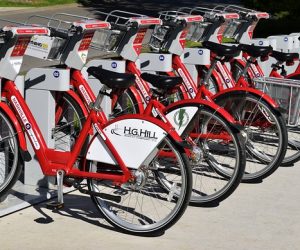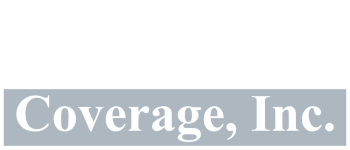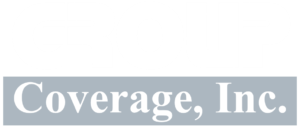Hired Auto Liability, Non-Owned Auto Liability, Hired Auto Physical Damage
Hired Auto Liability coverage provides third party excess liability insurance for vehicles you rent, hire, or lease (short term-generally less than 30 consecutive days) used in connection of your organization. Hired autos generally do not extend coverage to vehicles loaned by the employees or members of their households of the organization, for heavy or “mobile” equipment, for vehicles rented, or hired with a driver.
Employee Hired Auto Liability extends coverage to protect the employee if an auto is rented under their names for the organization’s use. Under most commercial auto policies, employees are not insured of the organization while driving non-owned autos.

Hired Auto Liability, Non-Owned Auto Liability, Hired Auto Physical Damage

Hired Auto Liability coverage provides third party excess liability insurance for vehicles you rent, hire, or lease (short term-generally less than 30 consecutive days) used in connection of your organization. Hired autos generally do not extend coverage to vehicles loaned by the employees or members of their households of the organization, for heavy or “mobile” equipment, for vehicles rented, or hired with a driver.
Employee Hired Auto Liability extends coverage to protect the employee if an auto is rented under their names for the organization’s use. Under most commercial auto policies, employees are not insured of the organization while driving non-owned autos.
- An example of non-owned auto liability would include sending an employee to pick up the mail from the post office with their own personal vehicle. The employee’s primary liability coverage is their own auto insurance; however, the excess and the interests of the organization could be provided by the non-owned auto liability coverage.
- An example of hired auto liability would be if an organization rents a car while its own is being repaired. If a third party were injured by an accident caused by the driver of the organization while operating the rental car, the bodily injury and property damage to the other vehicle and its operator could be extended by the hired auto liability coverage. Note, this coverage does not extend coverage to repair the hired auto. Separate Hired Auto Physical Damage would be needed.
Coverage may be provided on many commercial auto & truck policies or BAP’s (business auto policies) and usually requires the same limits of auto/truck liability for third party coverage on scheduled vehicles. If no coverage is provided under a BAP, coverage may be obtained by endorsement on a BOP (business owner’s policy) or a CPP (commercial package policy), etc. Check with the carrier if it is available otherwise coverage may be obtained as a separate policy.
Many commercial auto and truck policies include hired and non-owned auto liability automatically with a symbol defined as “Any Auto” on the declaration page but more carriers are utilizing symbols that specify the vehicles require that each is listed on a schedule. Therefore, it may become necessary to add the coverage by endorsement if the policy covers only what is listed. Check the definition of the symbols used on commercial auto or truck policy or if the exclusion and if coverage on the CPP or BOP to ensure coverage is available.
Many BOPS and CPP carriers will not offer coverage for hired and non-owned vehicles due to the insured’s industry such as those with heavy deliveries by its employees such as a pizzeria. Manufacturer sales companies and real estate offices generally have difficulty finding the coverage on BOP’s or CPP’s due to the inherent exposure of transferring clients or goods in employee-owned vehicles.
Both lines of coverage provide legal defense for the company, usually chosen by the insurance carrier providing coverage. This may be different than providing defense costs as the latter implies the choice of attorneys is at the discretion of the insured and often the carrier may limit the selection to its own counsel. Coverage may not be available to protect the interests of the employees, the physical damage of the vehicle, or the contents in the vehicle.
Hired Auto Physical Damage Coverage usually provides coverage on a primary basis to pay for the physical damage to a hired, rented, or short term leased vehicle due to a covered cause of loss as if the vehicles were owned and insured by the organization. Covered losses may include collision or damage by fire, flood, or theft available on a named peril, comprehensive, or “other than collision” basis. Coverage is generally not extended for vehicles hired with a driver; however, this may be available by endorsement.

Organizations with large fleets or that rent vehicles on a regular basis may purchase this coverage on an annual basis for an aggregate amount. A cost savings may be apparent compared to purchasing it for each rental, however, companies commonly purchase this protection through the rental agreements on a daily or short-term basis. If purchased on an annual basis with a maximum limit, it is important to adjust the amounts to the exposure by raising the limits to the values if the values increase. A $ 30,000 limit would probably not cover the total loss of an exotic sport car rented for an executive unless the value is less than the stated amount.
In addition, the recovery methods may differ from one policy to another. The “Actual Cash Value” method for vehicles may not contemplate the increased value caused by the demand, or the diminution in value if the car is damaged, therefore it may be important to examine any difference in what the valuation of the vehicle is compared to the level of coverage. Agreed and stated valuation methods may not be available, but if available, may provide a better alternative to Actual Cash Value. The terms of the lease and rental agreement become important to determine how the value of the vehicle is determined.

Organizations with large fleets or that rent vehicles on a regular basis may purchase this coverage on an annual basis for an aggregate amount. A cost savings may be apparent compared to purchasing it for each rental, however, companies commonly purchase this protection through the rental agreements on a daily or short-term basis. If purchased on an annual basis with a maximum limit, it is important to adjust the amounts to the exposure by raising the limits to the values if the values increase. A $ 30,000 limit would probably not cover the total loss of an exotic sport car rented for an executive unless the value is less than the stated amount.
In addition, the recovery methods may differ from one policy to another. The “Actual Cash Value” method for vehicles may not contemplate the increased value caused by the demand, or the diminution in value if the car is damaged, therefore it may be important to examine any difference in what the valuation of the vehicle is compared to the level of coverage. Agreed and stated valuation methods may not be available, but if available, may provide a better alternative to Actual Cash Value. The terms of the lease and rental agreement become important to determine how the value of the vehicle is determined.
Loss of Use” expenses may be due to the rental agency if the vehicle is damaged and there is a financial loss to the agency for the inability to rent it to another party. Many policies offer an amount of coverage of only $ 20 per day up to $ 600 maximum. This amount may not be enough to cover what the rental agency could have rented the vehicle to someone else, hence the difference may be the responsibility of the renter, so it is important to check the rental contract.
Finally, it is important to add “Employee Hired Auto” endorsement if employees are renting the vehicle in their names for the organization’s use.

